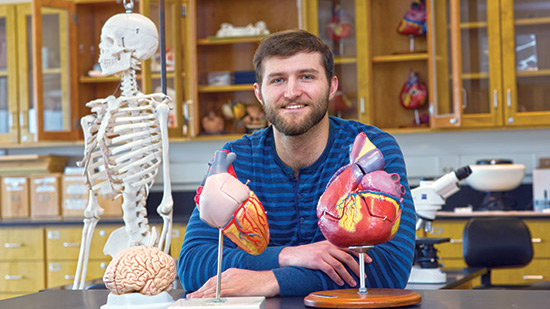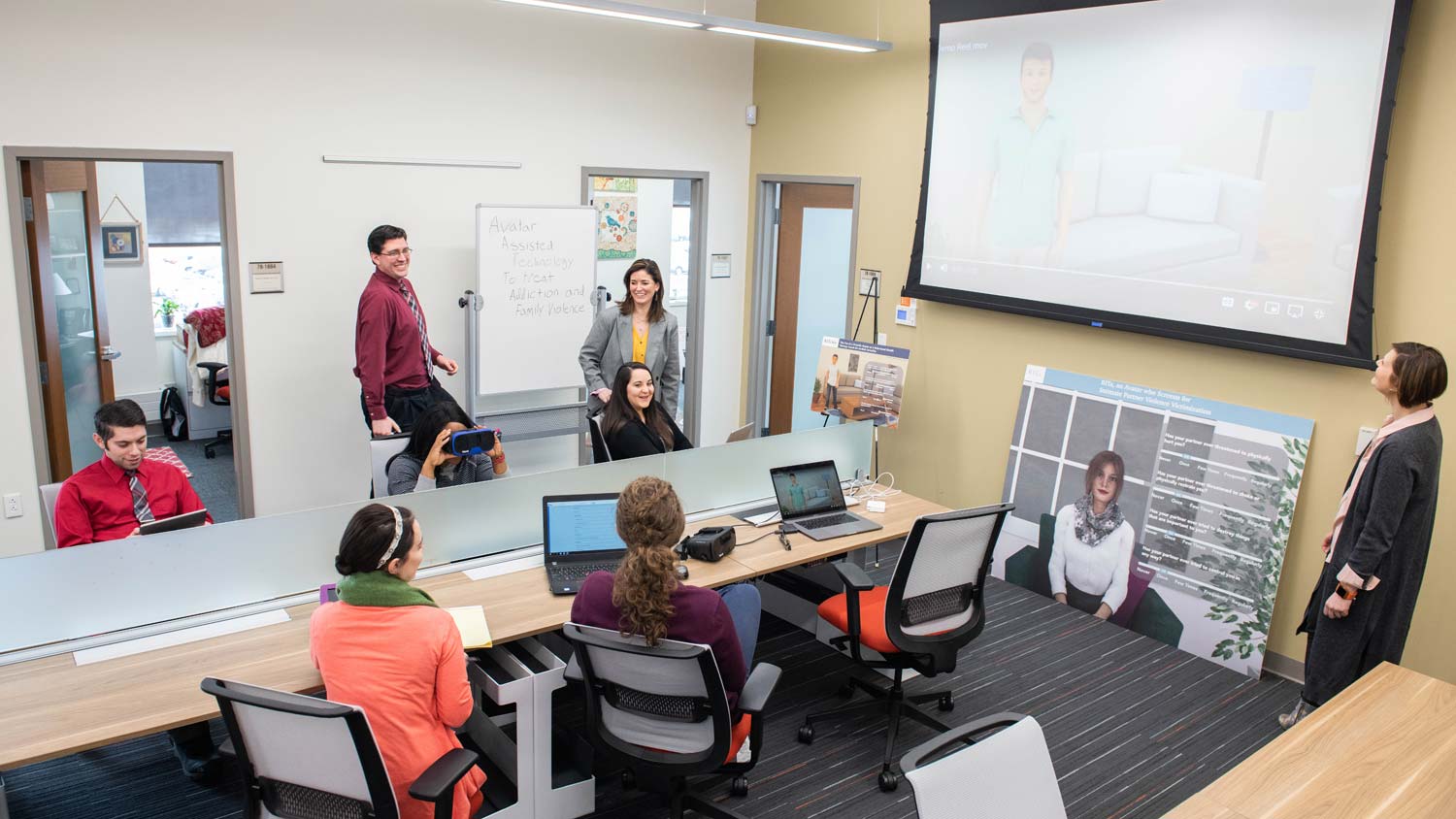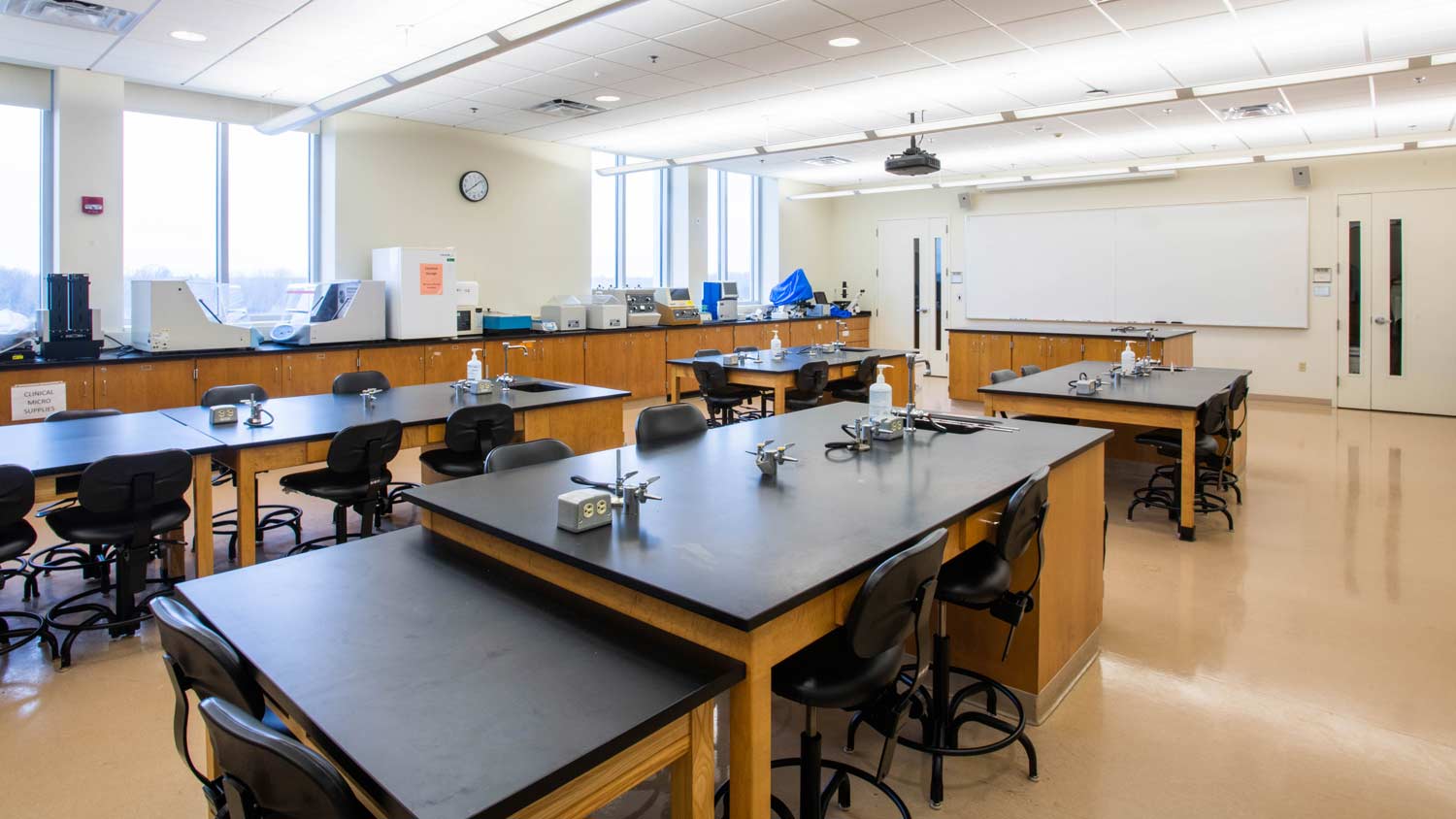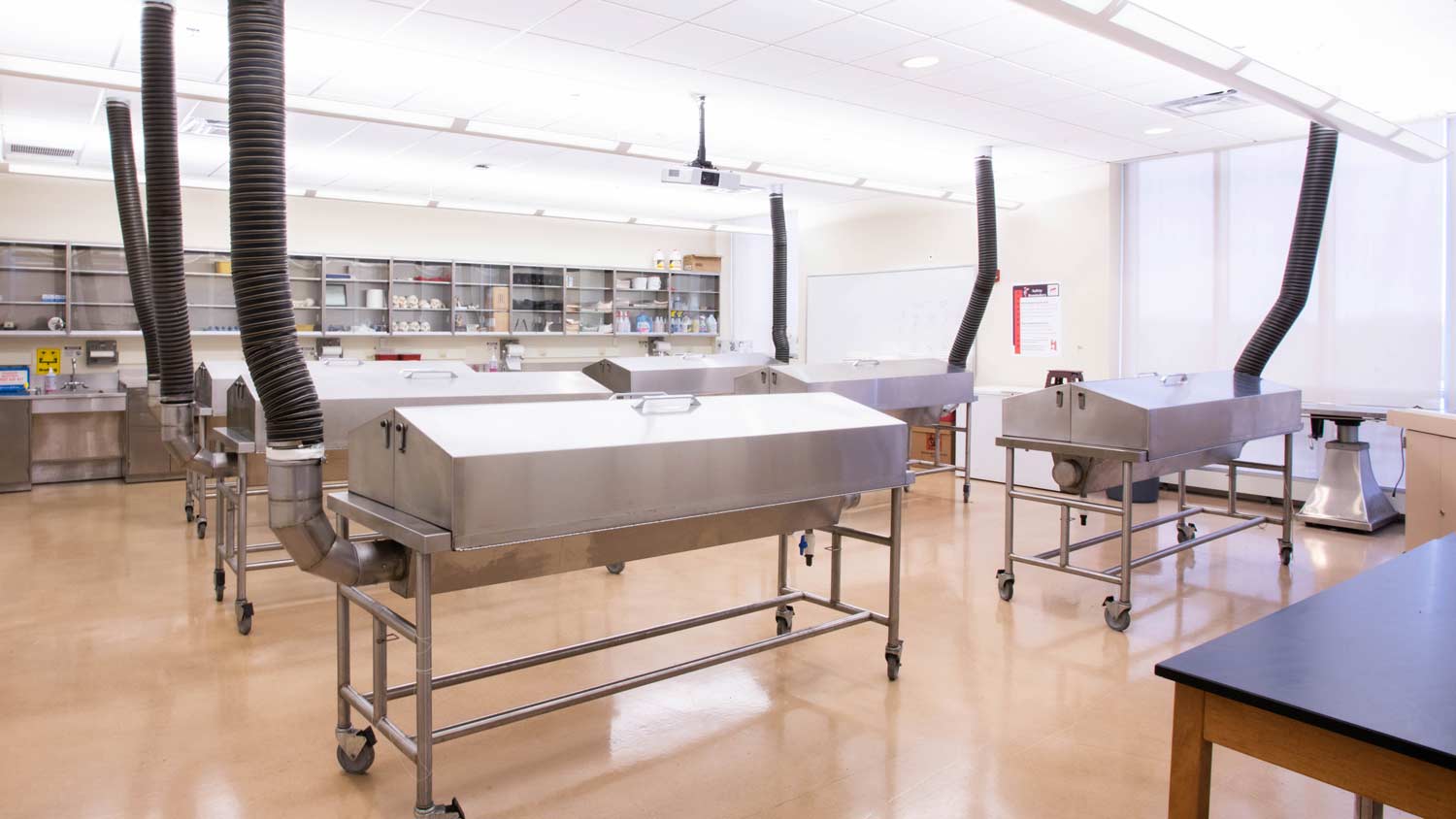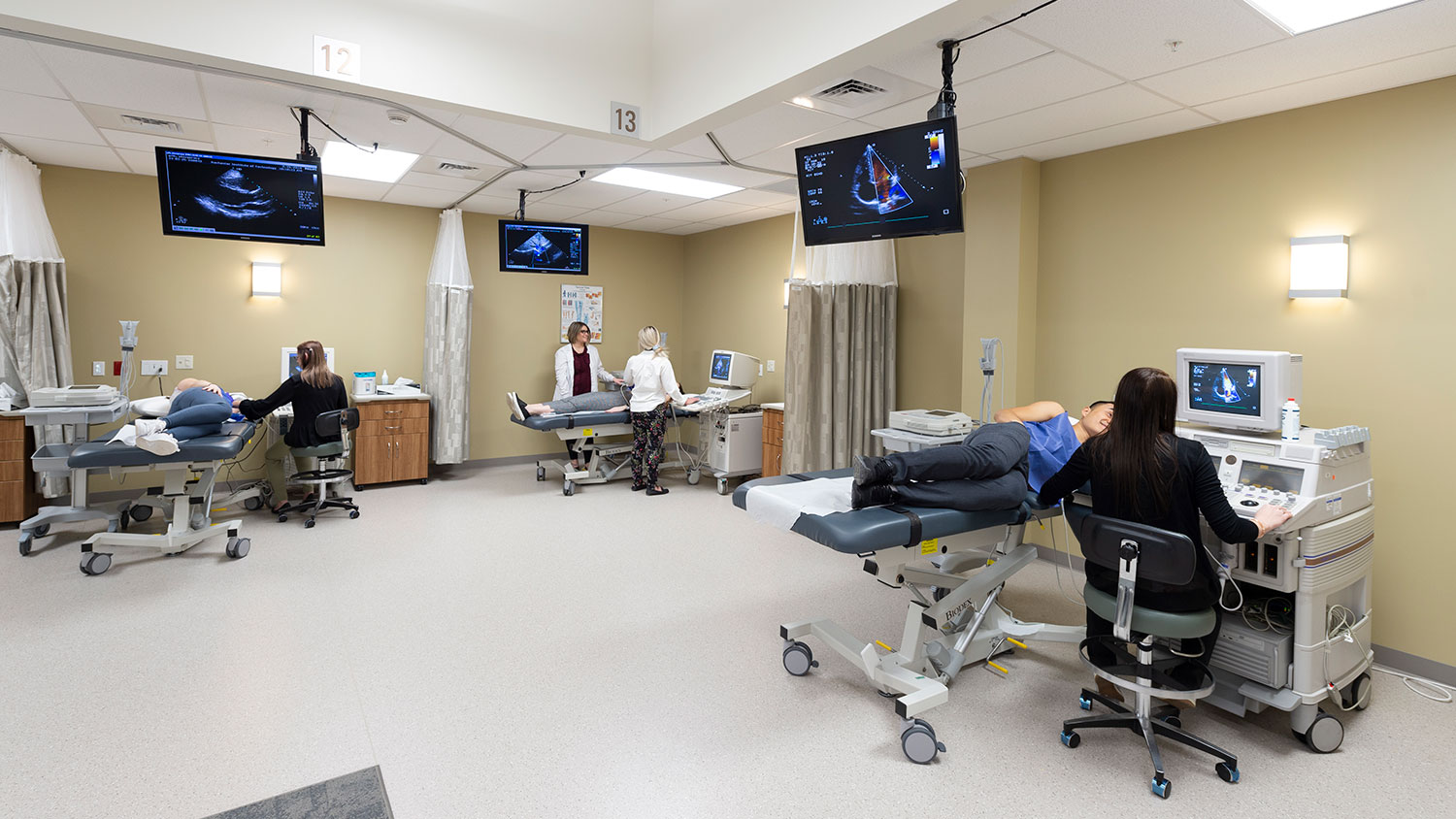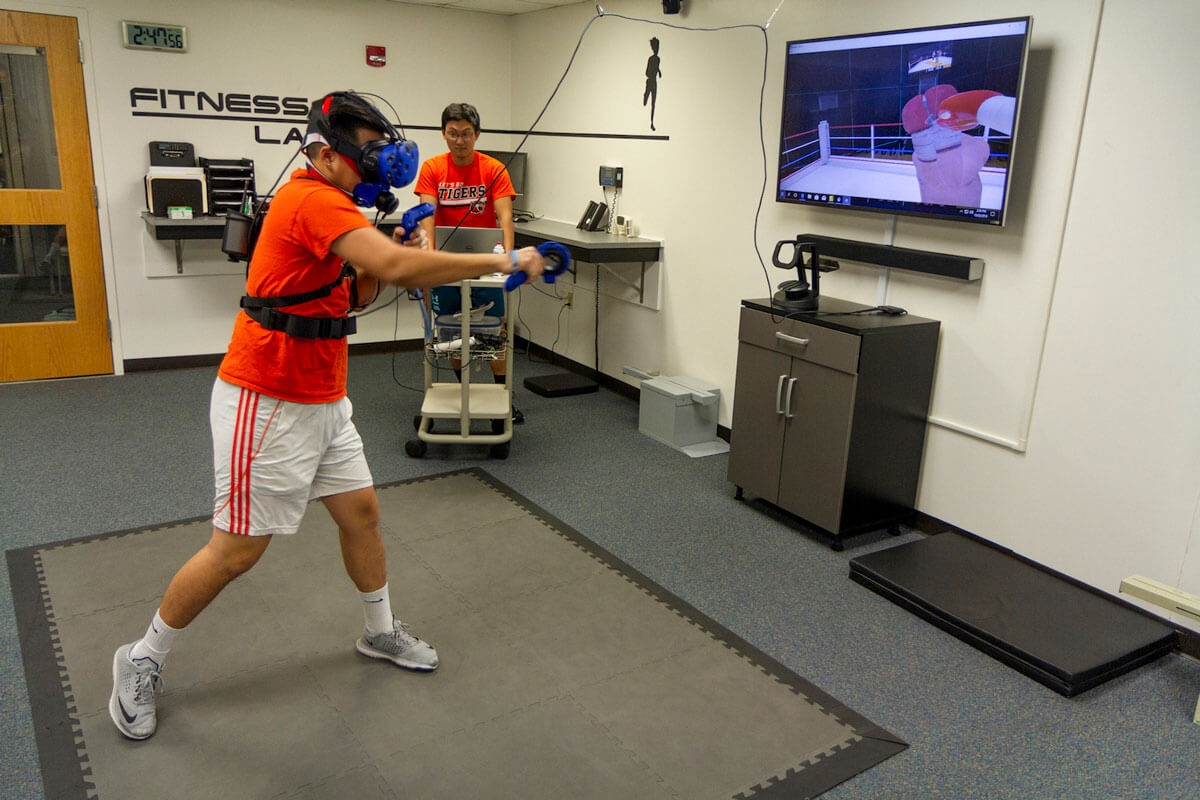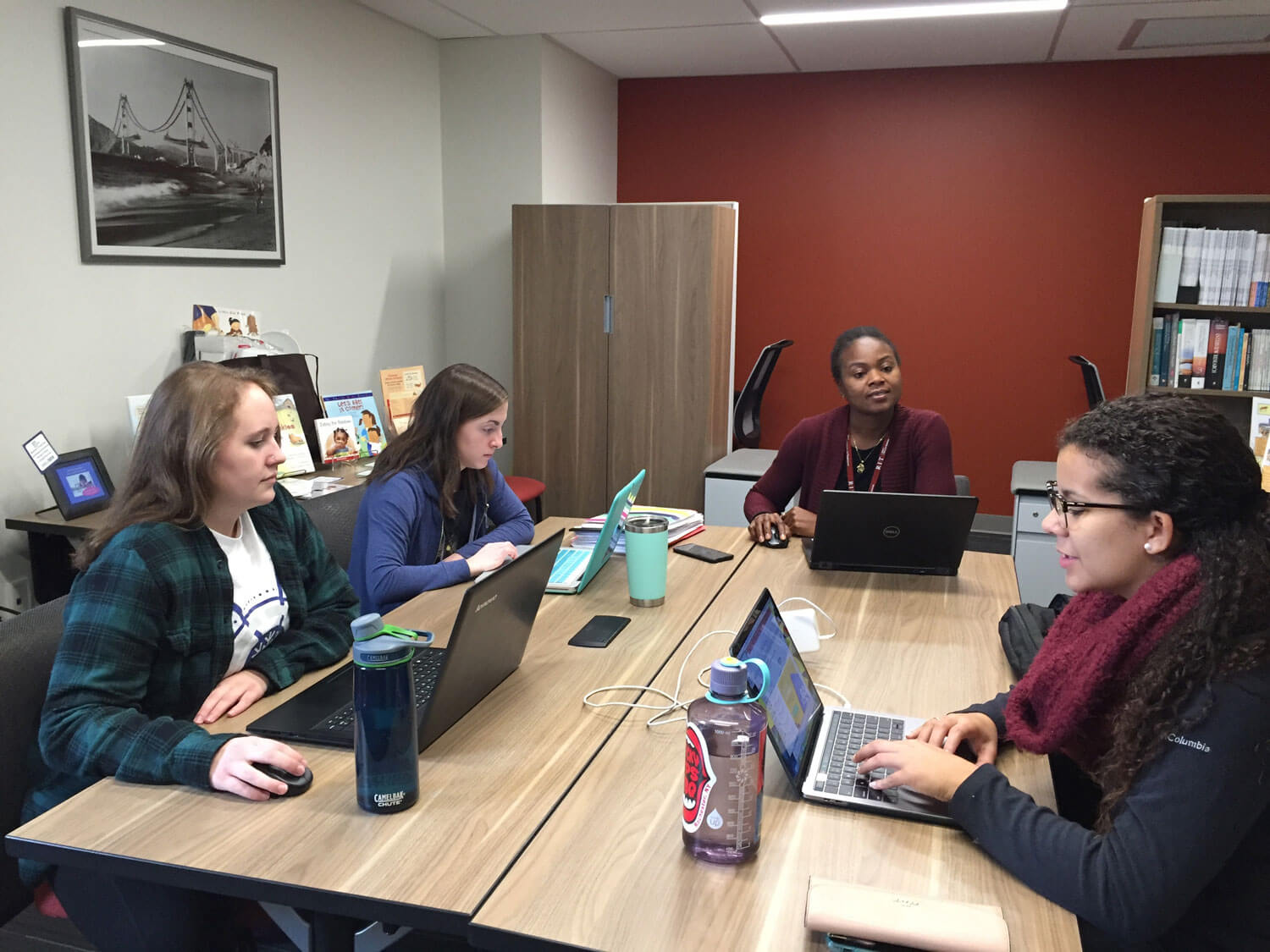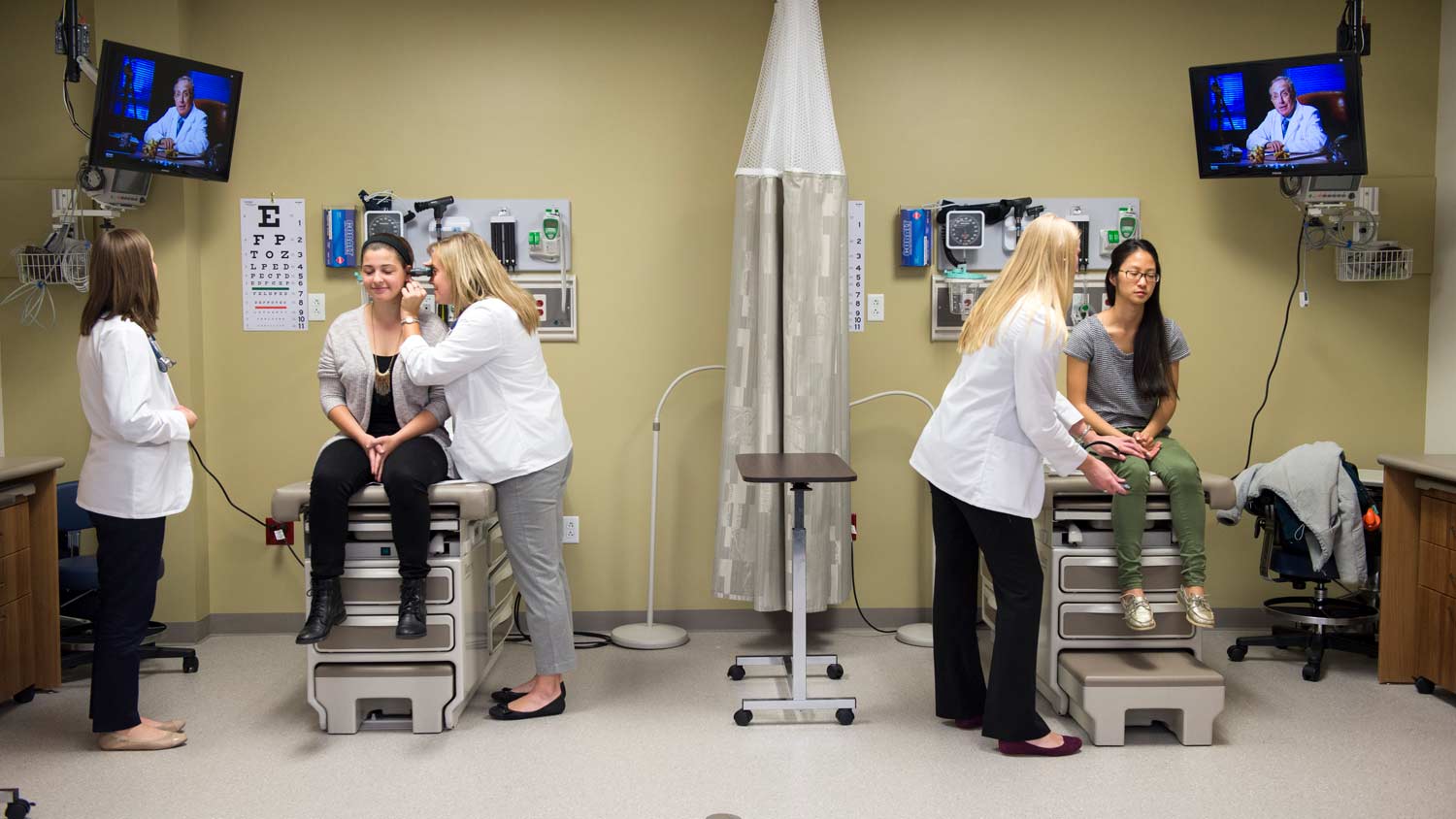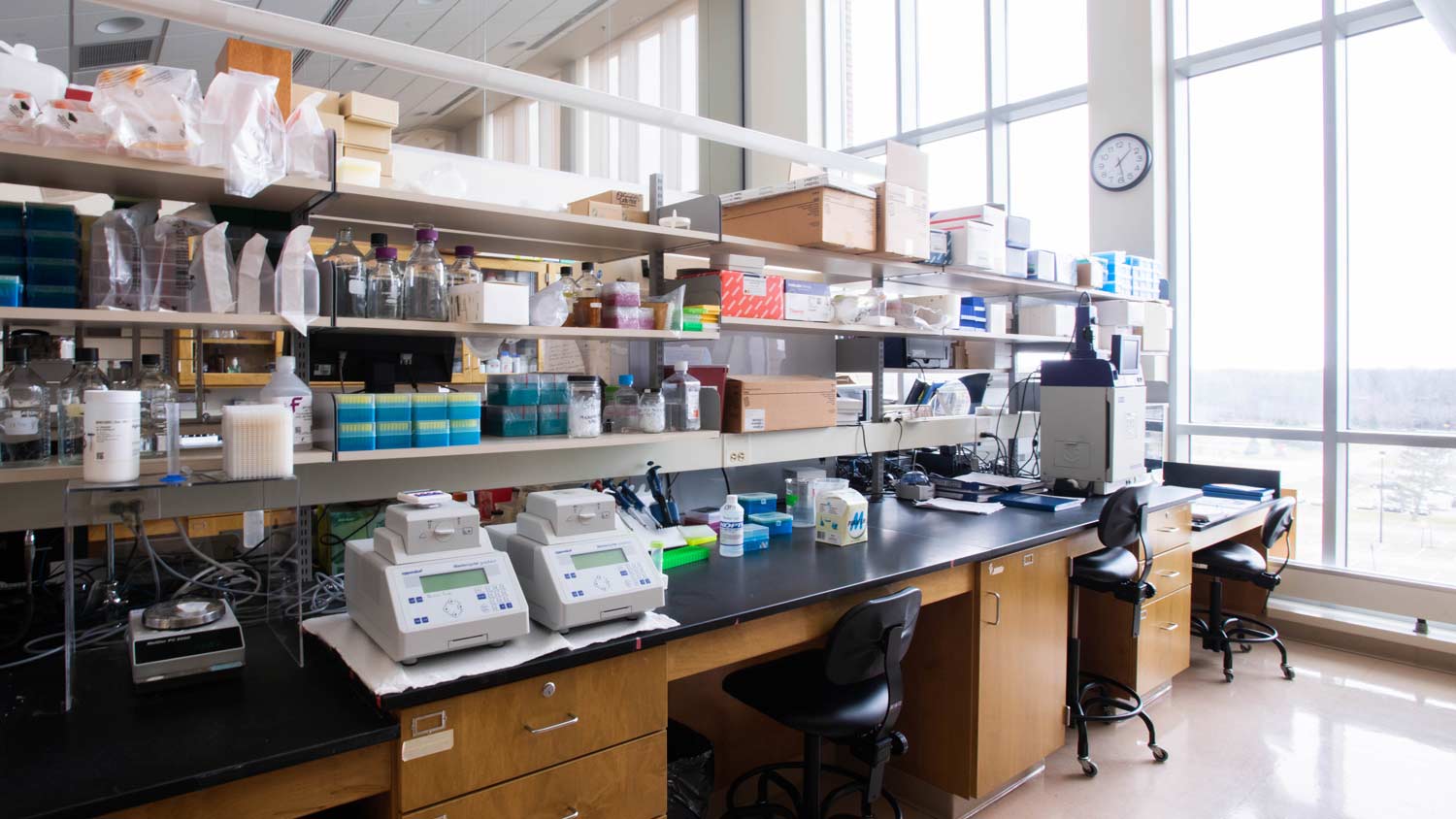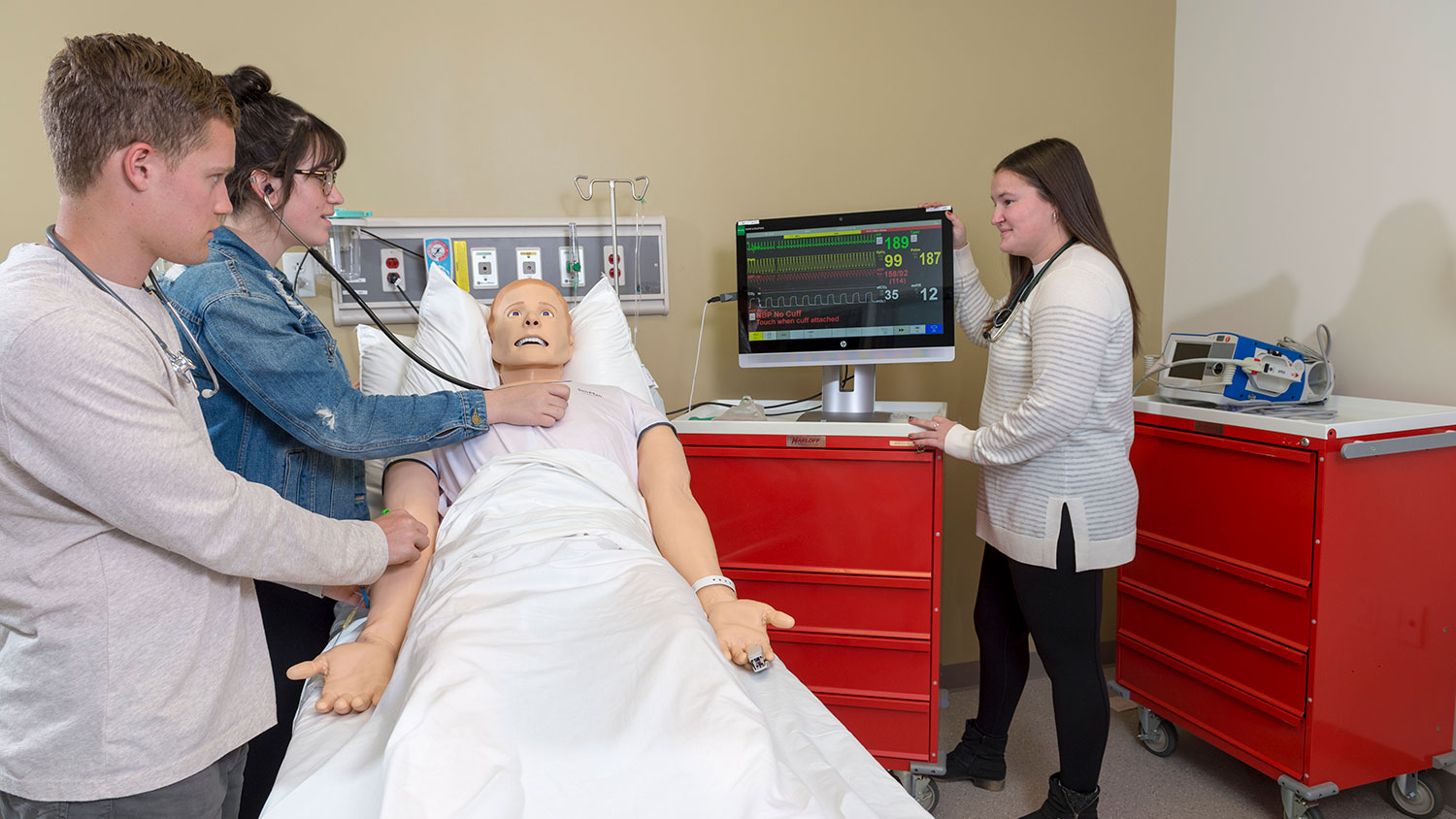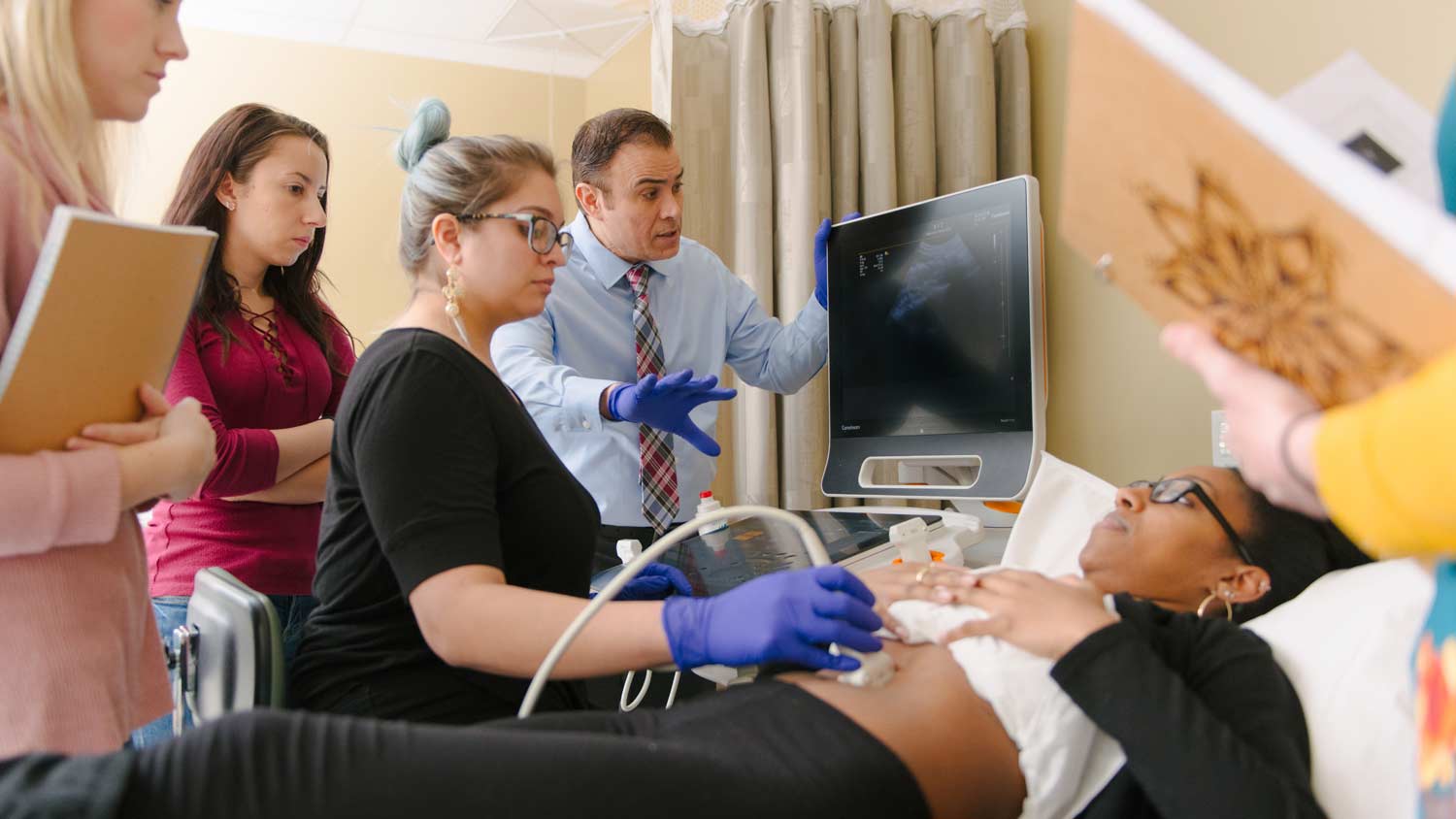Facilities
-
![Student sits in lab with models of brain, heart and human skeleton]() Anatomy and Physiology Lab
Anatomy and Physiology LabStudents in Anatomy and Physiology learn the structure and function of the body’s organ systems (digestive, respiratory, cardiovascular, nervous, etc.).
-
![A group of people with laptops reviewing a video on a projector]() Behavioral Health Dry Lab
Behavioral Health Dry LabWithin this space, clinical psychology interns and undergraduate students work with computer systems to create interactive therapeutic models.
-
![Open lab with large desks and a projector]() Biomedical Sciences Lab
Biomedical Sciences LabThe Biomedical Sciences Laboratory is fully equipped with ventilated hoods, centrifuges, and benchtop equipment to support experiments in molecular biology and microbiology.
-
![Cadaver lab with 6 tables]() Cadaver Lab
Cadaver LabHuman gross anatomy is taught in the fall (for medical illustration majors) and in the spring (for physician assistant and biomedical sciences majors) with the use of cadaver specimens acquired from the University of Rochester's School of Medicine.
-
![a hospital room with 3 patients all using ultrasound scanners with TVs on the wall showing the scan imagery]() Echocardiography Lab
Echocardiography LabArranged as a central classroom with mock imaging stations around the perimeter, the Echocardiography Lab provides opportunities for both lecture and skill training for students to learn how to image the heart.
-
![Classroom lab with six work tables]() Health and Life Sciences Lab
Health and Life Sciences LabCourses taught in the Health and Life Sciences Lab are managed by the College of Health Sciences and Technology and the College of Science and offered for students in majoring in biomedical sciences, biology, and biotechnology and molecular bioscience.
-
![Student engaged in virtual reality boxing.]() Human Movement Lab
Human Movement LabThe Human Movement Lab houses state-of-the-art equipment utilized by exercise science students to gain hands-on experience conducting fitness assessments and testing.
-
![Three students and a faculty member working on laptops around a table.]() NEEDs Lab
NEEDs LabThe mission of the Nutrition Education, Engineering, and Designs (NEEDs) lab is to engineer and design research and evaluation services that foster promotion and delivery of evidence-based health and nutrition education.
-
![Patients sitting on medical tables in a mock exam room receiving examinations]() Physician Assistant Lab
Physician Assistant LabArranged as a central classroom with mock examination stations positioned around the perimeter, the Physician Assistant Lab provides opportunities for lecture and break-out stations that support clinical skill training for physician assistant majors.
-
![A research lab with measuring equipment on a benchtop]() Research Lab
Research LabThis research lab supports research conducted by students and faculty in biomedical sciences, specifically in the areas of clinical microbiology, immunology, and parasitology.
-
![3 students using a stethoscope on a dummy patient and a monitor with data readouts]() Simulation Lab
Simulation LabThe Simulation Laboratory consists of three parts a patient room that contains a simulation mannequin, a control room where operation of the mannequin occurs, and a debriefing room where faculty interact with students after simulated medical scenarios end.
-
![A group of people performing a sonogram on a patient]() Ultrasound Scanning Suite
Ultrasound Scanning SuiteTo remain a leader in educating technically sound sonographers, the diagnostic medical sonography program emphasizes not only on the didactic aspect of learning, but also the practical, hands-on, clinical aspect.





